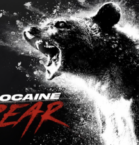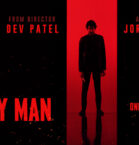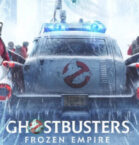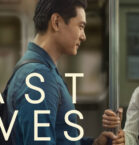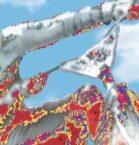Martin Scorsese’s World Cinema Project No. 2 Criterion Collection Blu-ray Review
INSIANG (1976)
They are the slums of Manila, where children play and live in the streets, markets blend together, animals roam like residents. It is in a small shanty that Insiang (Hilda Koronel) lives with her domineering mother, Tonya (Mona Lisa), and numerous relatives.
After Tonya boots the family members, she welcomes in a boyfriend, Dado (Ruel Vernal), who is more sexually drawn to Insiang. One night, he rapes her, and immediately the girl plots her revenge, revealing an additional purpose to the opening slaughterhouse scene.
Directed by Lino Brocka (whose later films, JAGUAR and BAYAN KO: KAPIT SA PATALIM, would be nominated for the Palme d’Or), INSIANG never hesitates in presenting a world that is filthy, hostile and unfair. Much of this is presented through melodramatic means, which greatly overshadow any politics that could have potentially bogged down the film. Through this approach, Brocka can effectively present how brutal the conditions are and how stuck the people are.
INSIANG uses its title character and those she encounters to express the lack of hope and overwhelming despair of the slums. She is a representation, one that gets to the core. Although done in perhaps an occasionally wayward manner, INSIANG offers a sometimes unnerving glimpse into an environment that strips, wears and entraps those that occupy it.
INSIANG was the first Philippine film to ever screen at the Cannes Film Festival.
Rating: 4/5

MYSTERIOUS OBJECT AT NOON (2000)
In our lives, fiction and non-fiction coexist. We might recall what happened that day at work and later tell our child a bedtime story. Stories, director Apichatpong Weerasethaku notes offscreen, can be real or fake. In MYSTERIOUS OBJECT AT NOON, they are offered as both.
Weerasethaku (who would later win the Palme d’Or for UNCLE BOONMEE WHO CAN RECALL HIS PAST LIVES) moves around Thailand seeking stories. Early on, after one subject tearfully recalls an instance from her youth, he asks, “Do you have any other stories?” Weerasethaku is clearly only interested in one thing.
And who isn’t sometimes? Aren’t we as film fanatics compelled by one? Don’t we sit around the table and spout them out? Don’t our tales sometimes get out of our hands as others hijack them? Weerasethaku, through rather unconventional means, creates–although it is fairer to say that those he interviews are the ones giving the content–a film that encompasses all of this, and which sits in that curious realm smack in the middle of fiction and documentary.
With a low budget (but, really, don’t we always tell stories for nothing?), willing non-actors and an ambitious goal, MYSTERIOUS OBJECT AT NOON proves to be an effective groundbreaker and a hallmark in a genre that should be given proper attention.
Rating: 4/5

REVENGE (1989)
In the early 20th century, a schoolteacher becomes frustrated with his class, his temper quickly taking over and moving him to kill a girl student. The father demands revenge but finds circumstances don’t allow him to take it. Years later, he has a son, Sungu, who is born responsible for exacting the revenge.
Soviet director Ermek Shinarbaev and Korean-Russian screenwriter Anatoli Kim team have molded a story based around justice that spans different times and places. It concerns people who cannot let go and people who are not permitted to.
REVENGE is divided into seven parts–intertitles abruptly appear to tie up any loose ends and fill in any gaps before the film moves to its next “tale”–although this structural decision seems to hold no true purpose other than to perhaps make the film feel more epic than it is. That a boy was brought into the world specifically to carry about murder is a compelling move in the revenge subgenre, but the film has little more substance than it hopes to.
Visually, Shinarbaev and cinematographer Sergei Kosmanev play with lighting, colors and filters throughout. Each “tale” has a distinct look to it, although not drastic enough to be jarring. This is an interesting approach that can take some adjusting (one segment may be vibrant in color while the next has a soft haze), but allows Shinarbaev to fully explore the almost hypnotic state one of its key characters has been placed in.
While occasionally missing the mark structurally and sometime lazily on-the-nose in its themes, REVENGE offers a welcome twist on its kind, marking a unique multicultural collaboration.
Rating: 3.5/5

LIMITE (1931)
The boat drifts, holding two women (Olga Breno, Tatiana Rey) and a man (Raul Schnoor). They don’t speak and, while they occupy the same space, they are in their own worlds.
Through flashbacks, we see who they are. One escaped from prison, another partook in a rocky marriage, another experienced heartache. The events have brought them to where they are, and as we witness their despair on the boat, we understand that the flashbacks were more who they were.
LIMITE is the only film by Brazilian director Mário Peixoto, who was inspired by an photo on a French magazine cover. From that single image came a full story (three, really) that displays loss and despair in a most fascinating way.
Peixoto has shattered conventions with LIMITE, his only cinematic work, produced when he was just 22. Peixoto worked to develop special devices (with the notable aid of cinematographer Edgar Brazil) to get the shots he needed, offering involving shots that are sometimes delicate, sometimes dizzying and always involving. The editing offers a seamless flow of events, subconsciously reminding viewers of the waters below.
The style seems to be a combination of those of early silent films from Germany, French and more. This Brazilian production–currently quite damaged and missing portions–though, is clearly a work of a unique mind.
He uses involving cinematography, superb editing and moody lighting to convey what he wants. There are lengths of experimentalism and surrealism, which sometimes feel symbolic (a dying fish or handcuffs, for example) and others not so much, as if there because it popped in Peixoto’s mind. This proves acceptable, even welcome, as nearly every scene feels as if it was being done in a way like never before.
LIMITE has positioned itself as an essential of world silent film and its director stands as one of early cinema’s most innovative minds.
Rating: 5/5

LAW OF THE BORDER (1966)
The border between Turkey and Syria is a dangerous one, the crossing of which could get you killed by gunshot or landmine. Yet, people risk their lives so they can seek any form of better life.
One such man drawn into the constant turmoil is Hidir (Yilmaz Güney), a farmer who cannot make a living with the infertile ground. With that, he cannot give his son, Yusuf (Hikmet Olgun), the life he wants him to have. Hidir finds himself taking on the position of sheepherder, smuggling 3,000 of the animals across the border to better the situation for his boy.
LAW OF THE BORDER, directed by Lütfi Ö Akad, plays out like some sort of western, in which the lonesome protagonist takes on heroic necessities not for himself, but others. Every moment he risks his well being for a greater good. What he does is illegal (a lieutenant keeps a watchful eye on the border), but the viewer has little doubt about Hidir’s morals.
The film, a landmark of Turkish cinema, has a visually direct style, which has drawn comparisons to a documentary. There is no flourish here, and the realism is present throughout. We consider every moment onscreen, how they wrong people and what they do to right them. In under 80 minutes, Akad mixes genres to tell the story, expose the conditions and highlight the sacrifices some must take.
Rating: 4.5/5

TAIPEI STORY (1985)
In the Taiwan capital of Taipei, a couple–former baseball player Chin (Tsai Chin) and Lung (Hou Hsiao-hsien), a honcho at a real estate development company–go on with their lives. Soon, we get the feeling that they do so because they have for so long.
The couple has clearly grown apart, something that is visually illustrated in the opening scene, as Chin and Lung inspect a potential home, never really spending much time in the same room. There are prospects to emigrate to the U.S., but they hit a snag when demotions and roadblocks are introduced. Both Chin and Lung move forward and backward throughout the film, but the promise of happiness is constantly out of reach. There is a downward spiral here, and Chin, Lung and the viewers know a move to the States won’t make it go away.
Director Edward Yang (whose final film, 2000’s YI YI, would be nominated for the Palme d’Or) presents the lives of two characters nearing some sort of breaking point. Yang treats each as an individual, a human, and never attempts to pass judgment on their decisions, no matter how poor (and there are a number).
TAIPEI STORY moves fairly slowly, feeling almost aimless, or at least pedestrian, in its direction. While this could be seen as mirroring the decay of Chin and Lung, it also tests patience, leaving some viewers to wonder if they should bother caring about the disintegration as much as Yang desires.
Rating: 3.5/5
BLU-RAY REVIEW
Video: 1.33:1 in 1080p with MPEG-4 AVC codec on LIMITE and REVENGE; 1.37:1 in 1080p with MPEG-4 AVC codec on INSIANG and LAW OF THE BORDER; 1.60:1 in 1070 with MPEG-4 AVC codec on MYSTERIOUS OBJECT AT NOON; 1.85:1 in 1080p with MPEG-4 AVC codec on TAIPEI STORY.
Audio: Tagalog Mono with English subtitles on INSIANG; Thai 5.1 Surround with English subtitles on MYSTERIOUS OBJECT AT NOON; Russian Mono with English subtitles on REVENGE; Silent on LIMITE; Turkish with English subtitles on LAW OF THE BORDER; Mandarin and Hokkien with English subtitles in TAIPEI STORY.
INSIANG: “This digital transfer was created in 4K resolution on an ARRISCAN wet-gate film scanner from the original camera negatives deposited at LTC laboratories in Paris by producer Rudy Tiong Tan. Portions of the film where the internegative had been cut into the negative had to be replaced using a 35 mm positive print preserved at the BFI National Archive. The color grading was supervised by film historian Pierre Rissient. The original optical sound negative presented critical recording issues and required considerable effort to minimize the metallic hiss and distortion. Additional restoration funding was provided by the Film Development Council of the Philippines. Restoration was completed in May 2015.”
MYSTERIOUS OBJECT AT NOON: “This digital transfer was created in 3K resolution on an ARRISCAN film scanner by the Australian Film Museum, using a 35 mm duplicate negative with burned-in subtitles deposited at the film museum by director Apichatpong Weerasethakul. This negative had been struck from the 16 mm camera reversal element, now lost. Painstaking work was undertaken to remove dust, scratches, and other visible marks while keeping the look and inherent defects of the original 16 mm camera reversal material intact. The subtitles were sharpened and corrected when necessary. Color correction was carried out at LISTO laboratory in Vienna; the 35 mm optical soundtrack negative was transferred at L’Immagine Ritrovata in Bologna; digital sound restoration was performed at Technicolor Ltd. in Bangkok. Restoration was carried out in close collaboration with Apichatpong and completed in June 2013.”
REVENGE: “This digital transfer was made in 2K resolution on an ARRISCAN film scanner from the original camera negative, the original soundtrack negative, and a positive print provided by Kazakhfilm Studios and held at the State Archive of Kazakhstan. Special thanks to director Ermek Shinarbaev for actively participating in the restoration process. Restoration was completed in May 2010 at L’Immagine Ritrovata.”
LIMITE: “This digital transfer was made in 2K resolution by the Cinemateca Brasileira from a duplicate positive and a duplicate negative provided by the Cinemateca. The decomposing 35 mm nitrate original camera negative was copied onto a cellulose acetate-based film negative and discarded in the 1970s. The gramophone recordings that had provided the original musical accompaniment were used as reference materials during the mixing of the soundtrack. Acknowledgements to all institutions and individuals who, at different times, cooperated in the preservation of Limite, with special thanks to the Mario Peixoto Archives, Embrafilme, Adriano Campos, Carlos Augusto Machado Calil, Patricia de Filippi, Ruy Solberg, Saulo Pereira de Mello, Carlos Magalhaes, and Walter Salles. Restoration was completed in October 2010.”
LAW OF THE BORDER: “The digital transfer was made in 2K resolution on an ARRISCAN film scanner from a positive print provided by Nil Gurpinar, the daughter of the film’s producer, and held by the Turkish Ministry of Culture. As this is the only element known to have survived the Turkish coup d’etat in 1980–all other film sources were seized and destroyed–the restoration required a considerable amount of both physical and digital repair. The surviving print was extremely dirty, scratchy, filled with mid-frame splices, and missing several frames. Although the film was shot in black and white, it was printed on color stock, resulting in significant decay. Overall, the poor state of preservation of the only source available for restoration has irreversibly hindered the quality of the final outcome. Restoration was completed in May 2011, with special thanks to Fatih Akin, Ali Akdeniz, and Nurhan Sekerci.
TAIPEI STORY: “This digital transfer was made in 4K resolution on an ARRISCAN film scanner from the original camera negative and the original soundtrack negative, provided and preserved by the Taiwan Film Institute. The main titles, missing from the original negative, were reconstructed using a vintage print. The film was restored by the World Cinema Project at L’Immagine Ritrovata, in association with the Taiwan Film Institute, Cinematheque royale de Belgique, and Hou Hsiao-hsien. Restoration was completed in March 2016.”
INSIANG
Martin Scorsese Introduction (2:04)
Pierre Rissient (14:38): Film enthusiast and historian Rissient sits down for an interview.
DVD
MYSTERIOUS OBJECT AT NOON
Martin Scorsese Introduction (1:40)
Apichatpong Weerasethaku (18:16) features an interview with the director, who reflects on the production.
DVD
REVENGE
Martin Scorsese Introduction (1:48)
Ermek Shinarbaev (18:51): Director Shinarbaev discusses his film and its meaning.
DVD
LIMITE
Martin Scorsese Introduction (1:55)
Walter Salles (14:12): Filmmaker Salles, who is founder of the Mário Peixoto Archives, fondly discusses LIMITE, chiefly its style, structure and director.
DVD
LAW OF THE BORDER
Martin Scorsese Introduction (2:38)
Mevlüt Akkaya (16:54): Filmmaker Akkaya covers the plot, themes and more of the film.
DVD
TAIPEI STORY
Martin Scorsese Introduction (2:21)
Hou Hsiao-Hsien and Edmond Wong (18:04): The filmmakers have a conversation about the film and its production.
DVD
Also included with this Criterion Collection release is a 60-page booklet featuring an introduction and essays on the films by Phillip Lopate, Dennis Lim, Kent Jones, Fabio Andrade, Bilge Ebiri, and Andrew Chan.

 Mathew Plale
Mathew Plale


